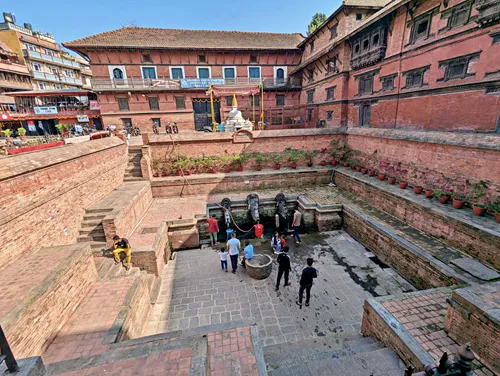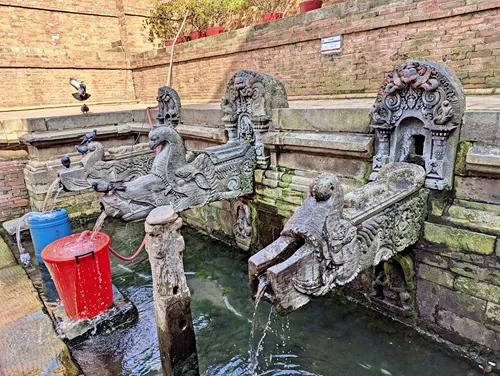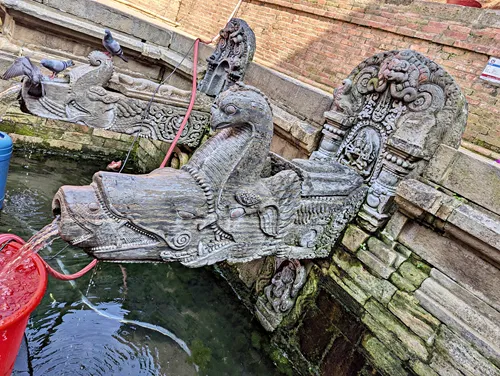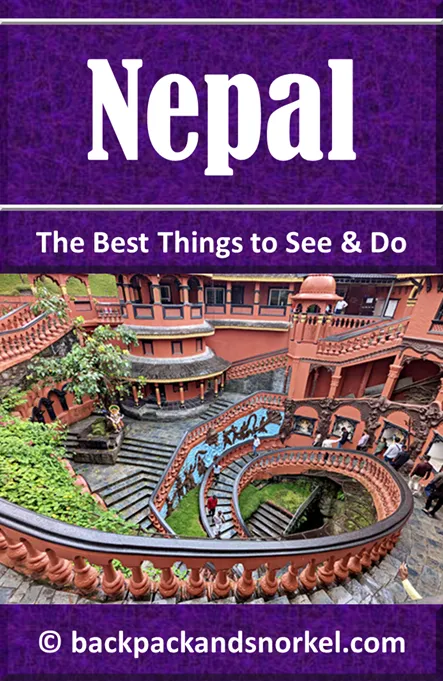Manga Hiti in Patan Durbar Square: Your Guide to the Ancient Water Spout - Nepal Purple Travel Guide
(map, reviews)
This is Premium Content! To access it, please download our
Backpack and Snorkel Purple Travel GuideManga Hiti is one of the oldest and most beautifully preserved stone water spouts (hiti) in the Kathmandu Valley. More than just a practical source of water, this historic fountain reflects centuries of Newar engineering, artistry, and urban planning.



Here at Backpack and Snorkel Travel Guides, we typically promote self-guided walking tours.
But we realize that not everybody likes to walk by themselves in a foreign city. So, just in case that you rather go with ab guide: NO PROBLEM! Please see the Viator tours below.
free GuruWalk tours
paid Viator tours
Origin of the Name Manga Hiti
The name ‘Manga Hiti’ comes from two Nepali words:
'Manga' likely refers to the local area or to a donor or dignitary associated with its construction.
'Hiti' means stone water spout, part of an ancient system of public water supply in the valley.
Together, the name refers to a community water source that has served residents of Patan for hundreds of years.
History and Significance of Manga Hiti
Manga Hiti, located in Patan Durbar Square, is a beautifully preserved example of a dhunge dhara (stone water spout) system. Featuring three ornately carved spouts in the form of makara (mythical aquatic creatures) this site holds deep cultural and historical significance.
According to local tradition and some historical records, Manga Hiti may have originally been constructed around 570 AD during the reign of King Shiva Deva I, making it one of the oldest functioning water fountains in the Kathmandu Valley. However, inscriptions and architectural elements also suggest major renovations during the 12th century, possibly under Malla patronage, which shaped much of its current form.
The central spout, uniquely decorated with a telescopic sequence of four animals (see if you can identify them), showcases the extraordinary craftsmanship of Newar artisans. The makara motif, found throughout Nepalese architecture, symbolizes protection and purity.
When you get there, you will most likely see locals bottling water in big buckets. Doing your morning routine and washing clothes is not allowed.
Although the 2015 earthquake caused damage to the ceremonial pavilions surrounding the hiti, ongoing restoration efforts are preserving Manga Hiti’s role as both a functional water source and a living cultural monument.
Back to your self-guided tour
Author: Rudy at Backpack and Snorkel
Bio: Owner of Backpack and Snorkel Travel Guides. We create in-depth guides to help you plan unforgettable vacations around the world.
Other popular Purple Travel Guides you may be interested in:
Like this Backpack and Snorkel Purple Travel Guide? Pin these for later:





